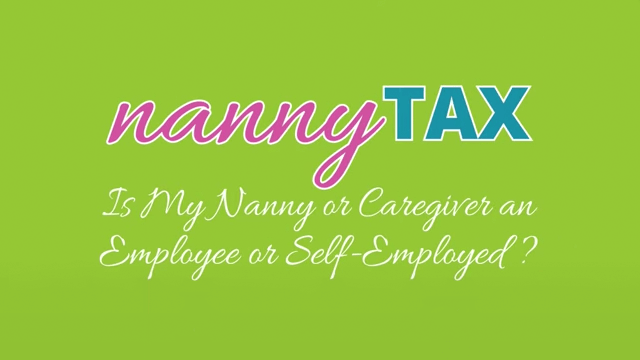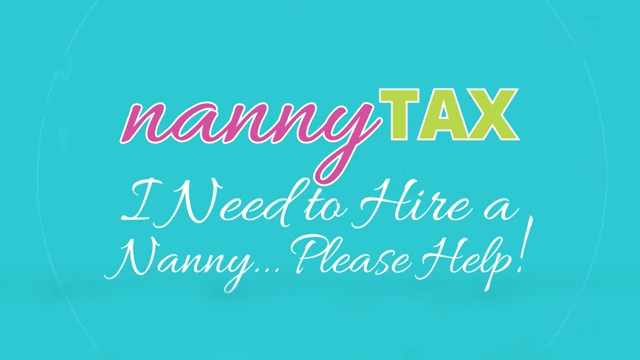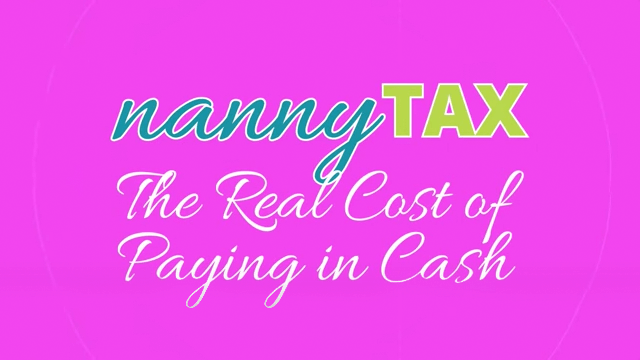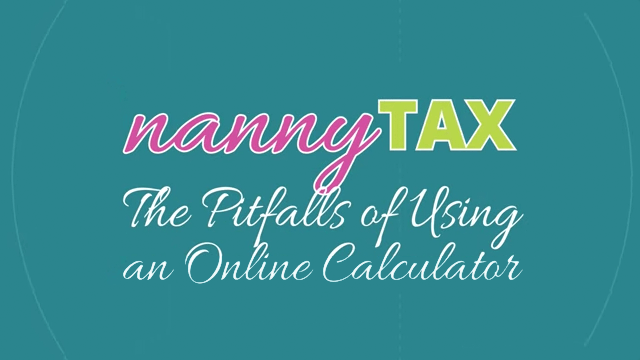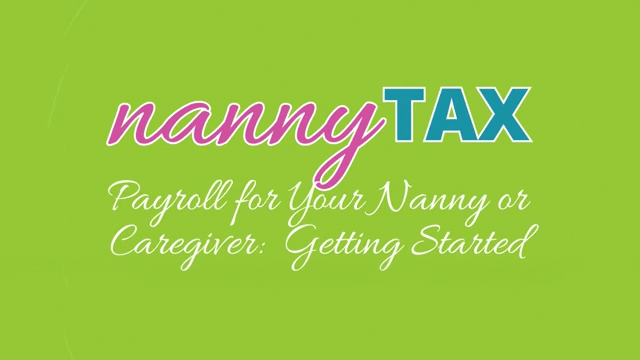
How to Avoid the Unexpected Costs of Hiring a Nanny
So you’ve hired a nanny or are thinking about hiring a nanny. But are you aware of these little-known financial considerations that can end up costing you money?
- Congratulations you are now an employer with full payroll responsibilities! That means you need to be registered with the Canadian Revenue Agency (CRA) with a payroll account that’s attached to a business number. The payroll account is where you remit all the money you’re withholding from the nanny’s pay (taxes, CPP, EI premiums) and your employer’s portion of CPP and EI. Your business should be created as a sole proprietorship or partnership and not as a corporation.
- Depending on the province and the number of hours your nanny works, you may also need to register with the WCB (Workers’ Compensation Board) in your province. The premium for this insurance is paid by the employer. If you hire through the foreign worker program, be sure to check if you need WCB coverage or the private equivalent. As per the website: “In provinces/territories where the provincial/territorial legislation allows employers the flexibility to opt for a private insurance plan, employers must ensure:
- that any private plan chosen provides the same level of compensation to that offered by a province/territory (for example, must provide the same or better coverage than that offered by the province/territory)
- that all employees on the worksite are covered by the same provider
Employers enquiring about private insurance plan equivalency should contact the provincial/territorial workplace safety authority.” For more information, please refer to this link. https://www.canada.ca/en/employment-social-development/services/foreign-workers/caregiver.html
- Once you’re all registered as a business and with the WCB if required, then you need to make sure you’re doing payroll correctly by:
- Providing pay statements that are compliant to employment standards
- Making remittances to the different bodies on time and correctly
- Reporting the proper amounts to both the CRA and WCB (if required)
- Don’t forget the year end filing of taxes! You will need to file a T4 and a T4 summary. Sometimes employers make the mistake of creating a T4 and then giving it to the nanny, thinking their job is done. But it doesn’t end there! You have to also submit a copy of the T4 to the CRA along with a T4 summary. Otherwise, your tax filing could end up being late and you could be penalized. The deadline for T4 filing is the end of February following the calendar year to which the slips apply, or earlier if you close the business.
- If your relationship with your nanny ends, you have to produce a Record of Employment (ROE). And if you’re not hiring again, you have to close off all your accounts with the CRA so they know not to expect any further payments. Also, be sure to file the T4 and summary within 30 days of closing the business.
- Think about your total budget. Don’t go in blind. When you’re negotiating a salary with your nanny, make sure it’s clear if the amount is before or after taxes. There is a big difference to your budget between a pre or after tax amount. For example, let’s say we’re talking about $600 a week. If it’s $600 net (after taxes), that’s around $710-750 gross assuming the basic claim amounts, depending on the province. But $600 a week gross is in the range of $500 per week net. Remember that the gross amount is still not your budget number. A good buffer is to add 10% to the gross salary. Once the employer portion of CPP and EI as well as Worker’s Compensation are factored in, that $600 net may add up to over $800 a week and for some households, this could mean rethinking their affordability. And remember that the more net income the employee makes, the more you need to work backwards to a higher starting amount. It is always best for everyone to negotiate based on the gross amount!! A blog more about that: https://nannytax.ca/whats-the-difference-between-gross-and-net-and-why-do-i-need-to-care/
-
- Factor in vacation pay. Ideally, when you go on vacation, your nanny goes on vacation too. But what if you have more vacation time than your nanny does? Are you going to give more vacation time with pay, have your nanny work while you’re away, or give time off without pay? Make sure you align on this together at the beginning of employment. Let’s say your nanny is going to help you with childcare while you’re on vacation. This means your nanny is going to take vacation at another time. And, you will need to budget for childcare during that vacation period since you could be potentially paying for two people during this period (your nanny on vacation and her replacement). In most provinces, employees are entitled to 2 weeks vacation to start and then it increases to 3 weeks after 5 years of service. Or, it may start from 3 weeks – be sure to check!
- Consider termination pay. What happens when you no longer need your nanny? How much notice do you have to give? Be sure to check with your Provincial Employment Standards. When looking up the applicable rules, note that if your employee is not going to work the notice period, you will likely need to provide pay in lieu of notice.
- Budget for statutory holidays. It varies by province but assuming your nanny is eligible, pay for stat holidays may be mandatory even if not working that day. If you need your employee to work on a stat holiday, it can get expensive. For example, in some provinces, if a caregiver works on the stat holiday, you are paying the stat holiday pay plus “time and a half” for the actual hours worked. This means pay for that day could be as much as double time and a half.
-
- Tax implications of a live-in vs. live-out nanny. Every province has a max amount that you can charge to an employee that is living with you and this is broken down into 2 parts: rent and food. In at least one province, you can’t charge at all. If hiring through the foreign worker program, you also may not be allowed to charge. So if you’re not charging anything for room and board, the employee is getting something of value for nothing and this is considered a part of their compensation. You need to include this taxable benefit on their pay statement and T4.
- So when it comes to room and board, how do I determine the value of the taxable benefit? According to the CRA, it’s the market value of the board and lodging that determines the amount of the taxable benefit. The higher the market value, the greater the impact on the employee’s bottom line and the more you have to remit to the CRA. So don’t over-inflate the value of the room and board or your nanny will end up with very little because it will all get taxed away!
- If you’re charging, there may still be an amount that counts as a taxable benefit. This comes into play if you’re charging less than market value. Then, it’s considered subsidized lodging (i.e. market value minus what is being charged is the taxable benefit). Generally, the max amounts the provinces allow an employer to charge won’t get you to the full market value.
- If your nanny is a live-out, the most common taxable benefit is a bus pass to and from work. Be sure to determine if you will be handling the bus pass (or loading a card), or giving additional money to cover the cost. These are treated differently for EI premium calculation purposes. If the only reason you provide the bus pass is for travel on the job, this is not a taxable benefit. If you’re paying mileage on the job (e.g. your nanny is driving to pick up groceries or to bring the kids to school, etc.), it’s not taxable if the prescribed reasonable per km rate is used for reimbursement.
- Tax implications of a live-in vs. live-out nanny. Every province has a max amount that you can charge to an employee that is living with you and this is broken down into 2 parts: rent and food. In at least one province, you can’t charge at all. If hiring through the foreign worker program, you also may not be allowed to charge. So if you’re not charging anything for room and board, the employee is getting something of value for nothing and this is considered a part of their compensation. You need to include this taxable benefit on their pay statement and T4.
For more information on room and board benefits, please refer to: https://www.canada.ca/en/revenue-agency/services/tax/businesses/topics/payroll/benefits-allowances/boarding-lodging/board-lodging.html
What’s the Net Take-Away?
Make sure you sign an employment contract in which all of these details and expectations are outlined to avoid any confusion or surprises for either you or your nanny.
Your relationship with your nanny is a special one. Your nanny is not only an employee, but also a family member and caregiver. Aside from these financial obligations and considerations, handle this relationship with the utmost care and respect.
And if you need to demystify any of these financial considerations or want to take away any anxiety related to your nanny’s payroll, please contact us and we’d be happy to help.






